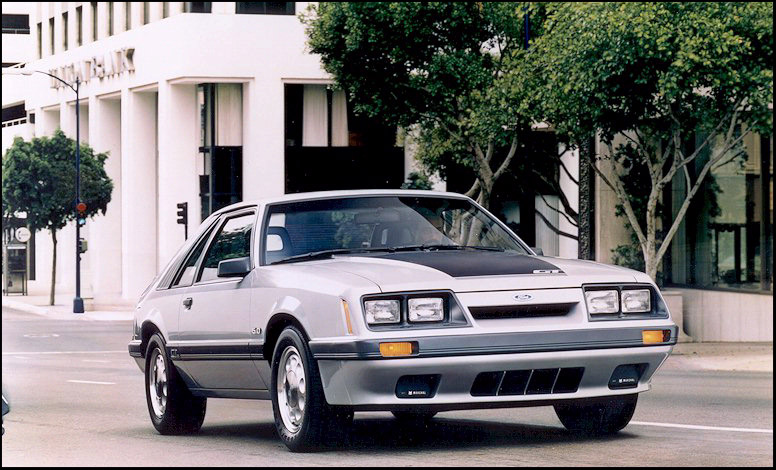1986 Ford Mustang GT
The Mustang GT was back in 1986 as the sport upgrade package but this wasn’t just another normal year for the GT. The introduction of the fuel-injection in the 5.0 HO V8 was a turning point in the American muscle cars future. Ford had created a 200 hp performance car that was capable of 14.7 second quarter-miles times and could still meet stringent fuel economy regulations. Add the fact that small improvements over the years also meant the 1986 GT was a decent handling car and Ford was building real momentum.
The basic structure of the 302 V8 engine was largely unchanged but there were a lot of upgrades beyond just electronic fuel injection. The V8 got a high-performance forged camshaft; roller lifters; forged aluminum pistons with low-tension rings; stainless steel tubular exhaust headers; and a good, old-fashioned, large-diameter, honest-to-goodness dual exhaust. Ford also upgraded the valves and installed a more efficient water pump that robbed less power during operation. Perhaps the only things holding it back were the truck-derived cylinder heads, which were chosen more for their efficiency than for outright power. But Ford raised the compression ratio to a respectable 9.2:1, which made up for the choice of heads.
Though the 1986 GT’s 200 horsepower was down 10hp from the last four-barrel-equipped Mustang GT sold in 1985, it was faster in terms of performance and was a more robust and fun engine thanks to the increase in torque to 285 lbs/ft across a broader rev range. The optional, shorter 3.08-geared rear end also helped with performance too. A proper five-speed manual, the Borg-Warner T-5, was standard kit on the GT, though an automatic with overdrive could be ordered as well. In 1986, the Mustang GT saw an updated drivetrain including a new 10.5″ (from 10″) clutch. The 7.5″ rear-end was eliminated in V8 models in favor of the stronger 8.8″ rear-end.
The GT also had unique, more aggressive styling than the base Mustang. The Marchal fog lamps were integrated into the front bumper. The 1986 Mustang GT had carryovers from 1985 such as a hood stripe with GT lettering, GT embossed in the bodyside molding, rear spoiler, 10 spoke alloy wheels. The GT hood lettering and rear spoiler could be deleted.
Specs & Performance
ENGINE TYPE: Pushrod 16-Valve V8 engine, iron block and heads, electronic fuel injection
Displacement: 302 cu in, 4942cc
Power: 200 bhp
Torque: 285 lbs/ft
TRANSMISSION: 5-speed manual
DIMENSIONS:
Wheelbase: 100.5 in
Length: 179.3 in
Width: 69.1 in Height: 52.1 in
Curb weight: 3167 lb
PERFORMANCE RESULTS:
Zero to 60 mph: 6.4 sec
Zero to 100 mph: 18.8 sec
Top gear, 30-50 mph: 11.2 sec
Top gear, 50-70 mph: 11.2 sec
Standing ¼-mile: 14.9 sec @ 91 mph
Top speed (drag limited): 135 mph
Braking, 70-0 mph: 206 ft
Roadholding, 300-ft-dia skidpad: 0.79 g





I loved my white 1986 Mustang GT. I just found out about the 302 wngine upgrades for 1986. Great and good looking car and great engine. Excellent web site.